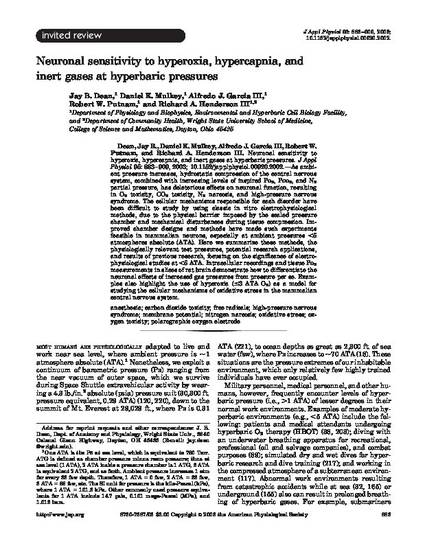
As ambient pressure increases, hydrostatic compression of the central nervous system, combined with increasing levels of inspired PO2, PCO2, and N2 partial pressure, has deleterious effects on neuronal function, resulting in O2 toxicity, CO2 toxicity, N2 narcosis, and high-pressure nervous syndrome. The cellular mechanisms responsible for each disorder have been difficult to study by using classic in vitro electrophysiological methods, due to the physical barrier imposed by the sealed pressure chamber and mechanical disturbances during tissue compression. Improved chamber designs and methods have made such experiments feasible in mammalian neurons, especially at ambient pressures <5 atmospheres absolute (ATA). Here we summarize these methods, the physiologically relevant test pressures, potential research applications, and results of previous research, focusing on the significance of electrophysiological studies at <5 ATA. Intracellular recordings and tissue PO2 measurements in slices of rat brain demonstrate how to differentiate the neuronal effects of increased gas pressures from pressure per se. Examples also highlight the use of hyperoxia (≤3 ATA O2) as a model for studying the cellular mechanisms of oxidative stress in the mammalian central nervous system.
Available at: http://works.bepress.com/robert_putnam/38/
